CONFEDERATE FRONTIERSMEN
The Story of Company A, Baylorís Regiment of Arizona Rangers
by Robert Perkins
The Confederate Territory of Arizona was beset by numerous threats, with Yankee forces to the north, Mexican bandits to the south, and Apache marauders everywhere in between. To meet these threats, Governor John Robert Baylor immediately mustered into Confederate service the various local militia companies which existed within the Territory. The best of these were the Arizona Guards of Pinos Altos (a town on the Mimbres River near present-day Deming, New Mexico), commanded by Captain Thomas Mastin, and the Arizona Rangers of La Mesilla (not to be confused with Company A, Baylor's Regiment of Arizona Rangers, who form the main subject of this article), commanded by Captain George Frazier.1
These local militia units proved a valuable addition to the Confederate forces defending Arizona, but Governor Baylor recognized the need to raise yet more troops for its defense. Taking a page from the history of his native State, Baylor decided to raise a regiment of Rangers for frontier defense. Like the famous Texas Rangers with which he was familiar, this regiment of Arizona Rangers would consist of several companies of cavalry which would patrol and defend the frontier areas of Confederate Arizona from the various threats the Territory faced. The plan never came to fruition, however, and only one of these companies was ever raised. This was, of course, Company A.2

Captain Sherod Hunter, 1st Commander of Company A
Governor Baylor commissioned Sherod Hunter, a highly-regarded junior officer in Captain George Frazierís company, as a Captain and charged him with the recruitment of the first company. The MESILLA TIMES of January 8, 1862 had the following to say of this: "We are pleased to hear that Capt. Hunter is being very successful in his efforts towards organizing his Company...We do not know of a single officer under whom we would rather serve, nor one who has more compleetly (sic) the confidence and respect of his men, than he has of those of Capt. Frazer's Co., in which he was recently First Lieutenant."3
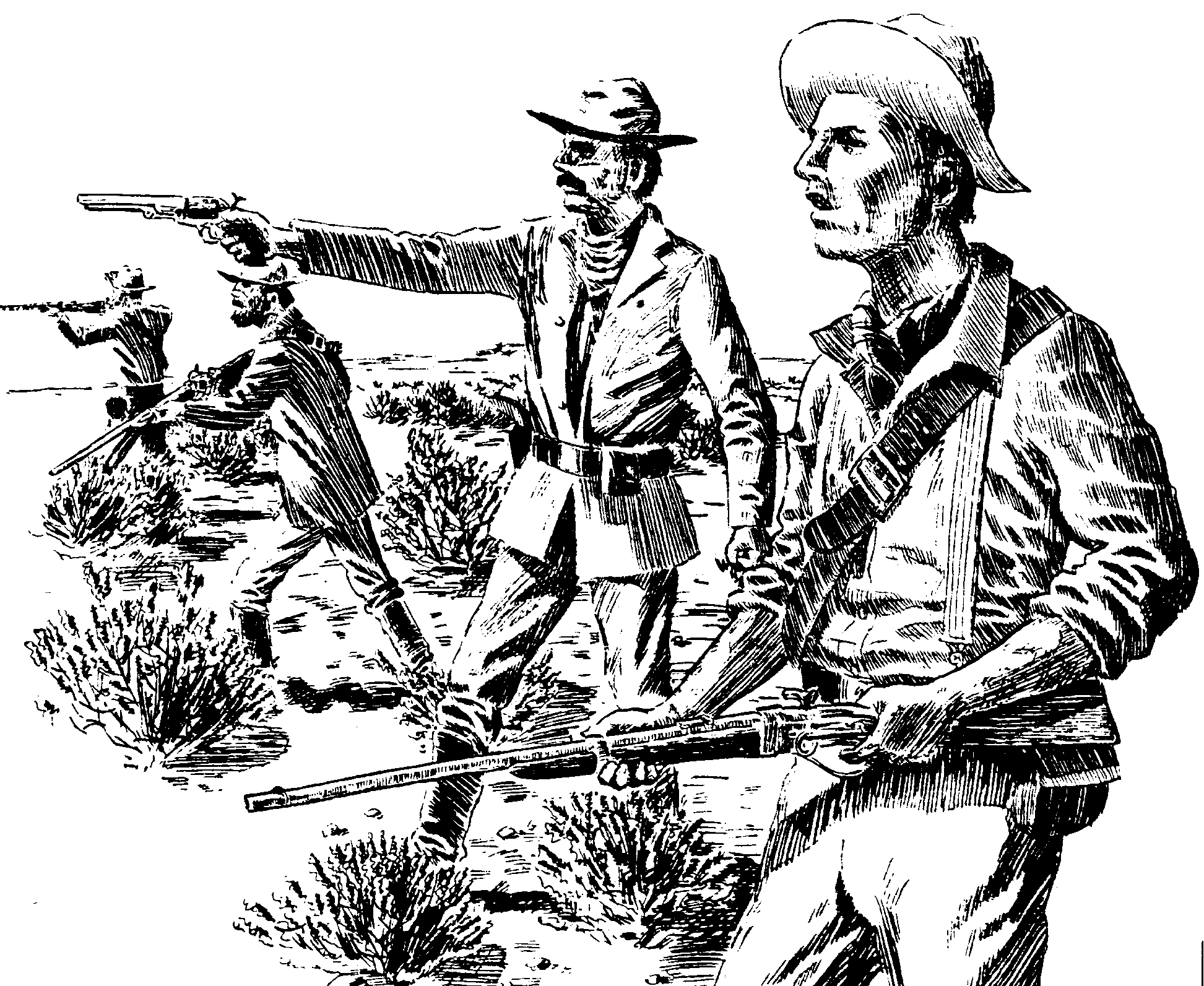
Members of Company A as they most likely appeared during the Arizona Campaign
The new company was composed of (to quote the MESILLA TIMES) "picked men, inured to the hardships of frontier life, and conversant with all its details."4 They were armed with six-shooter revolvers and Model 1847 smoothbore Dragoon musketoons, probably taken from the Federal garrison of Fort Fillmore when that post was surrendered to the Confederates in August 1861.5 The company was enlisted "for three years, or during the war."6 Although the MESILLA TIMES called them the "crack company of the service," they were certainly no "spit and polish" outfit. Tucson residents later observed that Hunter's men rarely drilled while in Tucson, (a possible indication of their great proficiency in the use of their weapons, which would be demonstrated later at Picacho Pass), and that they "slept where they pleased."7 It is unlikely that they were issued with any Confederate uniform during this campaign, but instead wore a conglomeration of civilian clothing and items of Union clothing from the stocks captured at Fort Fillmore.8
What was the name carried by Sherod Hunter's command? Several names have been used by various historians, such as "Arizona Volunteers," "Arizona Guards," and "Arizona Rangers." The name "Arizona Volunteers" probably derives from Confederate muster rolls, where the unit is sometimes referred to as "Independent Arizona Volunteers." However, this would seem to be more a description of the type of troops rather than the actual name of the unit. The "Arizona Guards" were a completely different company, and are obviously confused by some historians with Hunter's command (Certain members of Hunter's unit transferred into it from the Arizona Guards, and this is possibly the source of the confusion between the two units). The real clue to the name comes from Governor John R. Baylor, who stated in late 1862 (in a letter to Brigadier General Paul O. Hebert) that he had intended to create "a Regiment of Rangers," and that Hunter's company had been organized as the first Company of that Regiment.9 This is supported by Hunter himself, who seems to have called it in official documents "Company A, Baylorís Regiment," or sometimes simply "Company A."10 Based on these facts, the proper name of the Company would most likely have been Company A, Baylorís Regiment of Arizona Rangers.

Henry Connelly, Governor
United States Territory of New Mexico
Despite being labeled as such by nearly every historian who has written of the Confederate campaign in Arizona, the men of Hunter's command were for the most part not Texans, but rather residents of the Confederate Territory of Arizona. The erroneous identification of Hunter's men as "Texans" may stem from the fact that the company was attached to the Second Texas Mounted Rifles. However, they were never an organic part of that regiment, and in Confederate records are always listed as "Independent Arizona Volunteers, attached to the Second Texas Cavalry." And Boyd Finch, a historian who is probably the single most knowledgeable expert on the history of Sherod Hunter and his command, offers another explanation...Unionist propaganda. Among the native Mexican population of the United States Territory of New Mexico there was a deep suspicion and distrust of Texans, going back many years. Wishing to rally these people to the Union cause, the Unionist authorities, especially Governor Henry Connelly, sought to capitalize on this distrust by labeling all Confederates as "Texans."11 Unfortunately, like many other lies about the Confederacy and Confederates told by Unionists during and after the War, this label has survived the years intact, without even much questioning by historians.
The number of men in Hunter's command is a source of argument among historians. Estimates range from as low as 5412 to as high as 200.13 Possibly the most reliable estimate was given by Hiram Stephens, a Tucson resident who traveled from Mesilla to Tucson with Hunter's command. Stephens stated, in an affidavit made on October 5, 1862, that Hunter's command never contained more than 105 men.14. We know from other sources that 30 of these were not actually of Hunter's company (30 of these were a detachment from Captain Thomas Jefferson Helm's Arizona Guards, sent to serve as an escort for Colonel James Reily. Reily was traveling with Hunterís company to Tucson as a stop on his way to his real destination...Hermosillo, the capital of the Mexican state of Sonora, where he was being sent to open diplomatic relations with the Mexican Governor).15 If Stephens was accurate in his count, and there is little reason to believe otherwise, then Hunter's Company consisted of about 75 men.
On January 25, 1862, Company A, Baylor's Regiment of Arizona Rangers was mustered into the Confederate service at Dona Ana (a town located just north of present-day Las Cruces, New Mexico).16 On February 10, 1862 Company A was ordered to occupy Tucson, the most important town in the western portion of the Confederate Territory of Arizona.17 Tucson's adobe houses and 3,000 inhabitants were strategically located astride the only road leading east from California toward the Confederate enclave in the Mesilla Valley, and thus was the ideal spot to place an advanced Confederate outpost to watch for the approach of invading Yankees from California. By taking possession of Tucson, The Confederates would also be making good on their claim to possession of Western Arizona, which up to now had existed only on paper.18
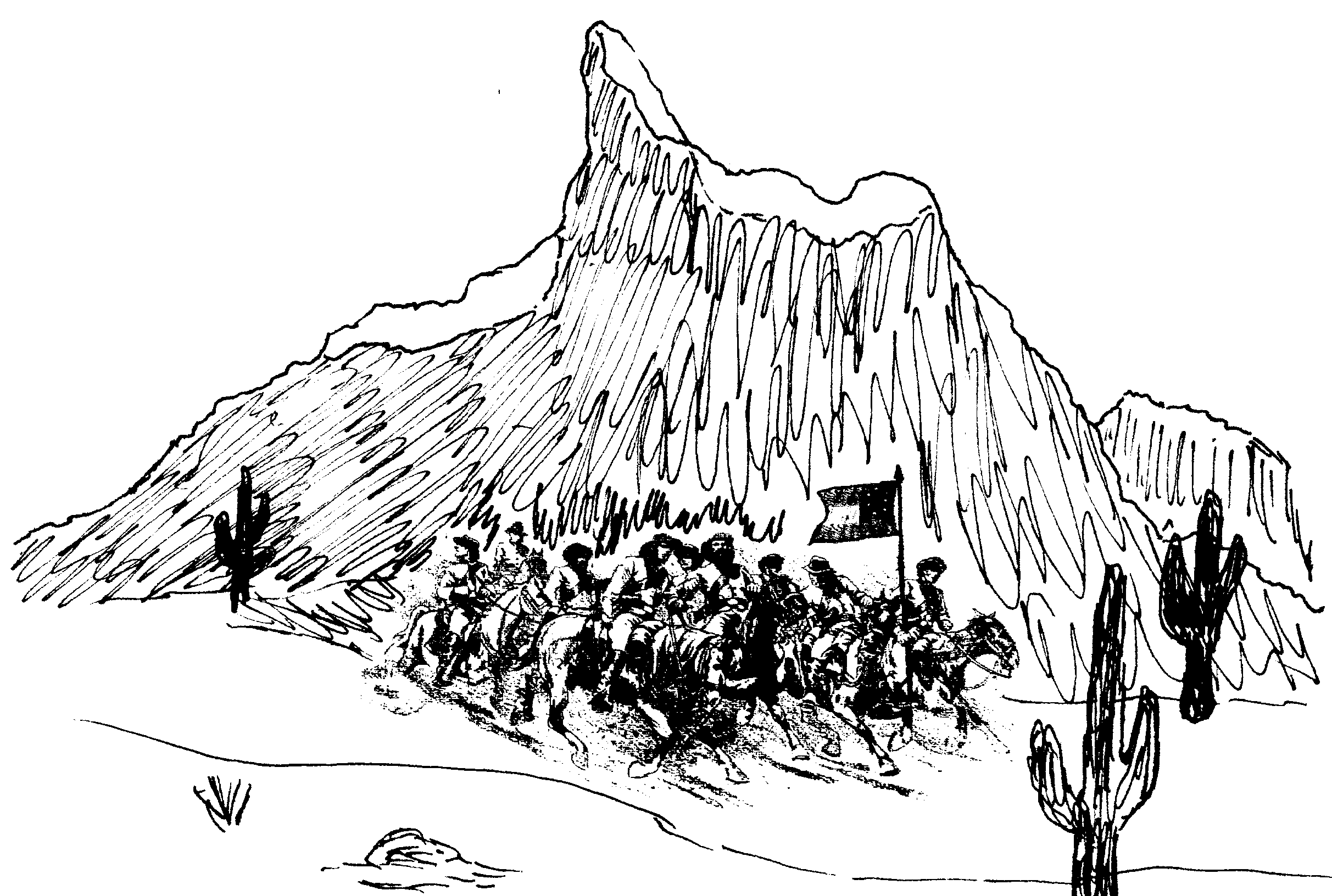
Members of Company A ride away from Picacho pass, April 15, 1862
Company A arrived in Tucson on February 27, 1862, and on March 1, they held a ceremony in which they raised the Stars and Bars over the town plaza.19 Thus began the most significant campaign in the Company's career as a Confederate Army unit. Company A would occupy Tucson until May 14, 1862, when the approach of a 2,000-man Union force under the command of Colonel James Henry Carleton, the so-called "California Column," forced them to retreat back to the Mesilla Valley. The invasion of Arizona by this Union force would have come much sooner save for the brilliant hit-and-run tactics employed by Captain Hunter and Company A. Elements of Company A managed to capture, without firing a shot, an advanced detachment of the 1st California Cavalry on March 18, 1862, and clashed with Union forces twice, at Stanwix Station (March 30, 1862, generally considered to be the westernmost skirmish of the War Between the States) and Picacho Pass (April 15, 1862, generally considered to be the westernmost battle of the war). The tiny Confederate force destroyed reserves of hay stored along the route from California to Tucson, and confiscated 1,500 sacks of wheat stored forthe Union forces at the villages of the Pima Indians (on the Gila River, about 30 miles south of present-day Phoenix, Arizona, forcing the Yankees to halt at the villages while new supplies were gathered. The net effect of Company A's activities was to delay the advance of the California Column for over a month, which probably saved the Confederate Army of New Mexico (the main Confederate force in Arizona and New Mexico, which had advanced northward along the Rio Grande to capture Albuquerque and Santa Fe before being defeated at the Battle of Glorietta Pass in March 1862 and forced to retreat back to Mesilla) from being intercepted and destroyed by the California Column as it retreated through the mountains back to the Mesilla Valley during April 1862.20
Surprisingly, despite the tremendous superiority of force arrayed against it, Company A lost only three men (all captured--none killed or wounded) during its campaign against the California Column...Sergeant Henry Holmes and Privates William Dwyer and John Hill were captured by the Unionists at the Battle of Picacho Pass on April 15, 1862. The Confederates inflicted losses of three killed, four wounded, and ten captured on the Union forces during the campaign.21 The Company did not get away completely unscathed, however. On May 5, 1862 the Confederates lost four men killed (Sergeant Sam Ford, a private named John Donaldson and another known only as Richardo, and one other whose name is lost to history) as well as the loss of 25 horses and 30 mules as a result of an Apache attack on a Confederate foraging expedition in the vicinity of the abandoned Butterfield Overland Stagecoach Station at Dragoon Springs (about 16 miles east of present-day Benson, Arizona). On May 9, 1862, however, they would have their revenge...a expedition sent out to recover the stolen livestock surprised the Apaches near Dragoon Springs and killed five of them without loss to themselves.22
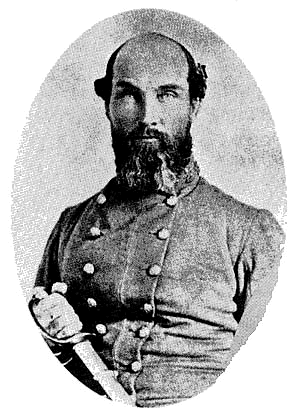
Governor John R. Baylor
Confederate Territory of Arizona
In the wake of the battle at Picacho Pass Captain Hunter had written to Governor Baylor, requesting a reinforcement of at least 250 men, with which he felt he could hold Tucson for the Confederacy.23 When no reinforcements were forthcoming, Hunter decided to evacuate Tucson. Company A left Tucson on May 14, leaving behind a small detachment under the command of Lt. James Henry Tevis to watch for the approach of Union forces from the north.24 Unknown to the Confederates, on that same day, the Union California Column finally left its bivouac at the Pima Villages for its final advance on Tucson.25 Lt. Tevis and his detachment were surprised and almost captured when the Yankee cavalry charged into town on May 20. Recalling the incident years later, Tevis candidly described his reaction to the entry of the Union troops: "They got too close for my health and I left." Tevis and his men managed to escape and rejoin the main body of Company A a few days later.26
Company A arrived back in La Mesilla on May 27, 1862.27 Once there it was combined with the Arizona Guards (under the command of Captain Thomas Helm) and the Arizona Rangers of Mesilla (under the command of Captain Granville Henderson Oury) to form a battalion of Arizona cavalry under the command of Lt. Colonel Philemon T. Herbert.28 The said battalion was part of a detachment left behind, under the command of Colonel William Steele, to watch for the approach of Union forces from the north and west as the bulk of the Confederate Army of New Mexico retreated to safety in San Antonio, Texas. During this period Company A took part in foraging activities in the countryside surrounding La Mesilla, and on July 1, 1862 it clashed with a band of native Mexican guerillas (none of the Confederates were killed or wounded, but several lost their horses and equipment as a result of the engagement). A few days later, on July 7, the approach of Union forces forced the Confederates to abandon the Mesilla Valley, and the Confederate Territory of Arizona, forever.29
Company A was among the last of the Confederate units to leave Arizona...indeed, James H. Tevis would claim (after the war) that Company A was THE last Confederate unit to leave and formed the reargaurd for the Confederate Army.30 It finally arrived in San Antonio in late July, 1862, with sixty-three men fit for duty (Company A, unlike the other Arizona companies which formed Herbert's Battalion of Arizona Cavalry, seems not to have suffered from significant rates of desertion as the unit prepared to leave Arizona).31 The arrival of Company A and the rest of Herbert's Battalion in San Antonio would mark the beginning of a period of exile for the Arizona troops. But exile would not mean inactivity, and the Arizona men would see much action over the next three years.
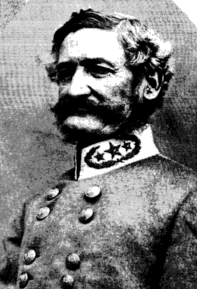
Henry Hopkins Sibley
Shortly after their arrival in San Antonio, Herbertís Battalion was formally assigned to the "Sibley Brigade," as the former the Army of New Mexico was now called.32 Their drunken and thoroughly discredited commander, Brigadier General Henry Hopkins Sibley, was not with them, however...shortly after his arrival in San Antonio he was called to Richmond to explain his conduct during the failed campaign in New Mexico. He would not return until December, 1862, and in the interim, the Brigade was commanded by Colonel Thomas Green.33
When Company A arrived in San Antonio they found a city in chaos. News of the loss of Arizona and the arrival of the Union California Column on the Rio Grande had preceded them into the city, and there was widespread fear that the Yankees would follow up their conquest of Confederate Arizona with an invasion of Texas. As it turned out, however, such fears proved illusory. The Unionists contented themselves with the occupation of El Paso and some other isolated settlements in the extreme west of Texas, and then settled down to consolidate their rule in Arizona (and mete out punishment to the local secessionists who had not retreated with the Confederate Army of New Mexico to the safety of Texas).34
Thus, Herbert's Battalion was afforded a period of several months to rest and refit. Although no record has survived to document it, it was during this time that the Arizona troops would likely have received their first issue of actual Confederate uniform. These were most likely locally made, undyed cotton/wool jeancloth garments made at the Texas State Penitentiary at Huntsville, Texas, which were being issued to most units in the far west during this time period.35
Company A received not only new uniforms during this time period, but a new commanding officer. On October 2, 1862, Sherod Hunter resigned his commission as Captain of Company A to accept the post of Major in Colonel George Wythe Baylor's Regiment of Texas-Arizona Cavalry, also known as the Second Cavalry Regiment, Arizona Brigade. First Lieutenant Robert L. Swope, like Hunter a native of Tennessee who had migrated to Arizona in the 1850s, was promoted to Captain and assumed command of Company A on October 3.36

Tom Green
Other than the issue of uniforms and the change of commanders, nothing else of note happened to the men of the Sibley Brigade until December of 1862. At the end of that month, Union warships sailed into the harbor of Galveston, Texas and landed a small invasion force which took control of the town itself. The men of the Sibley Brigade had been recently placed under the command of Colonel Thomas Green (General Sibley, suffering from depression and lapsing farther into alcoholism after the disastrous outcome of his invasion of New Mexico, still retained nominal command of the brigade, for the time being). Colonel Green was ordered by Major General John Bankhead Magruder, in command of the Department of Texas, Arizona, and New Mexico, to advance from San Antonio and to recapture the important port city. On January 1, 1863, aided by two converted steamers (nicknamed "cottonclads" after the bales of cotton piles on their decks so as to give protection to the Confederate riflemen posted there), Green and his men atacked the Union forces and routed them, capturing three companies of Union infantry in the process.37
However, it seems that Company A was not at Galveston with the rest of the Sibley Brigade. On December 2, 1862, General Henry Hopkins Sibley was ordered to New Iberia, Louisiana, there to take over, once again, command of the Brigade. Upon his December 25 arrival at Opelousas, La., enroute for New Iberia, he found that most of the Brigade had been ordered to Galveston by General Magruder. However, he reported that Herbertís Battalion was there in Louisiana with him, and had been "actively and usefully employed" in scouting "in the vicinity of Plaquemine and the Mississippi River."38
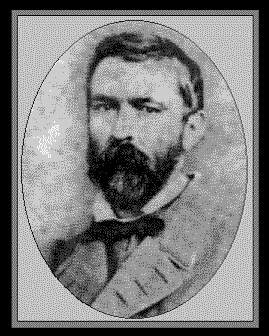
Richard Taylor
After their success at Galveston, the rest of the Sibley Brigade was ordered into Louisiana, rejoining their comrades of Herbertís Battaltion and General Sibley. The Brigade was then assigned to an army under General Richard Taylor which was operating in support of the Confederate defenders of Vicksburg and Port Hudson. It was hoped that Confederate forces operating on the west bank of the Mississippi might draw Union forces away from Vicksburg, allowing other Confederate forces gathering at Jackson, Mississippi under General Joseph E. Johnston to relieve the besieged city Unfortunately for the Confederacy, such was not to be the case, and Vicksburg would surrender on July 4, 1863. But successful or not, this attempt to succor the Confederacyís last bastions on the Mississippi River would soon place the men of the Sibley Brigade in combat during the Bayou Teche Campaign.39
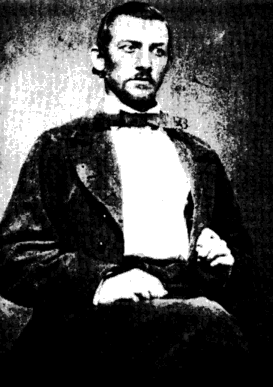
James Henry Tevis, third and final commander of Company A
Captain Robert L. Swope would not lead Company A during the Teche Campaign. In February 1863, shortly after the arrival of the Sibley Brigade in Louisiana, Swope resigned as commander of Company A, apparently as a result of an ongoing feud with the commander of the Arizona Battalion, Lt. Colonel Philemon T. Herbert. First Lieutenant James Henry Tevis was placed in command, although he was apparently not promoted to the rank of Captain at this time.40
In April 1863, the Sibley Brigade (including Herbertís Arizona Battalion) was among the men with which General Taylor confronted the Yankee army under General Nathaniel Banks at Fort Bisland, on the Bayou Teche. The Battle of Fort Bisland was a defeat for the Confederates, and General Taylor ordered a retreat. General Sibley, in command of the rear guard, nearly lost his command at Franklin, Louisiana, when he (possibly under the influence of alcohol) ordered the last bridge across the Bayou Teche burned before his men had made their escape. Seeing the bridge in flames behind them, they quickly disengaged from the enemy and fled, the last of them crossing just as the bridge was fully engulfed in flames. Sibley was soon afterward court-martialed for this and other offenses, and although he was not convicted, he was removed from command of the Brigade. The popular Colonel Thomas Green, who had led the brigade with distinction in earlier campaigns, was promoted to Brigadier General and placed in command of the Brigade.41
The many skirmishes which took place as Taylorís army retreated before the advancing Union army of General Nathaniel Banks during April and May of 1863 gradually sapped the strength of Herbert's Battalion of Arizona Cavalry (whose three companies' combined strength had numbered no more than 180 men when the Battalion was formed in July 1862). In just one such fight, near New Iberia, Louisiana, Company A suffered the loss of more than 15 men who were (according to a postwar report by James Henry Tevis) "cut down by sabres."42 By the end of May 1863 the Battalion had been reduced to the point where it was no longer an effective organization, and it was broken up. Company A (the former Company A, Baylor's Regiment of Arizona Rangers) still had enough men to continue as a viable company, and was kept in being as an independent Arizona Scout company, attached to the Green's Brigade. The other two companies of the Battalion (the former Arizona Guards of Pinos Altos and Arizona Rangers of Mesilla) were disbanded at this time, and the men within them were consolidated with Company A.43
The men of Company A would now be re-united with their former commander, Sherod Hunter. As mentioned earlier, Hunter had taken a commission as Major in the Second Texas-Arizona Cavalry Regiment of the Arizona Brigade. The Arizona Brigade was broken up in May 1863, and the Second and Third Texas-Arizona Cavalry Regiments were assigned to Green's Texas Cavalry Brigade.44 As it happened, they arrived in Louisiana just as Herbert's Battalion was being broken up. Although there is no direct proof of it, Captain Tevis and the Arizona Scouts may have been attached at this time to the Second Texas-Arizona Cavalry Regiment.45
The surrender of Vicksburg (and the lesser Confederate bastion at Port Hudson, Louisiana) in July 1863 led to the retreat of Green's Brigade to the region of Shreveport, Louisiana. In November 1863, the Arizona Scouts fought with Green's Brigade as they resisted a Union invasion up the Bayou Teche. In early December 1863 the brigade was recalled to Texas, in response to a threatened assault on Galveston by a Union naval force (which assault never materialized).46
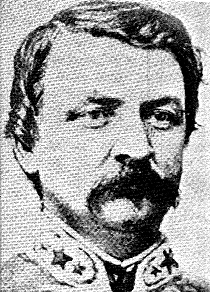
James Patrick Major
In late December of 1863, while still encamped near Galveston, the Second and Third Texas-Arizona Cavalry Regiments were re-assigned to the Texas Cavalry Brigade commanded by Brigadier General James Patrick Major.47 It would seem that the Arizona Scouts went with them, as in February 1864 they were among the companies detached from various regiments (Baylorís, Chisumís, Crumpís, and Madisonís) of Major's Brigade to form a Scouting Battalion under the command of Major William Saufley. Captain Tevisís Arizona Scout Company became Company E of the Battalion.48 Whether Saufley's Scouting Battalion ever was more than a paper organization, however, is uncertain, and during January and February 1864 it is known that the company operated as part of a command under Colonel James Duff (33rd Texas Cavalry) near Indianola, Texas.49
On March 5, 1864, James P. Major's Texas Cavalry Brigade was ordered back to Louisiana to oppose the invasion then proceeding up the Red River by a combined Union army and naval force under Major General Nathaniel Banks. During this campaign, Major's Brigade was combined with two other cavalry Brigades (Green's Brigade, now commanded by Colonel Arthur P. Bagby, and a brigade of Louisiana regiments) to form a Cavalry Division under the command of now-Major General Tom Green. Captain Tevis and the Arizona Scouts fought as part of Major's Brigade during this campaign (whether as part of Saufleyís Battalion or attached to the Second Texas-Arizona Cavalry or to Duffís Regiment is unknown), participating in the major battles at Wilson's Farm (April 7, 1864), Mansfield (April 8, 1864) and Pleasant Hill (April 9, 1864), as well as numerous other skirmishes throughout the rest of the campaign. In one notable instance, on May 1, 1864 near Wilsonís Landing on the Red River, "after an exciting chase of 2 miles" the Arizona Scouts under Lt. John M. Smith assisted in the capture of a Union transport, the U.S.S. Emma. Her crew was made prisoner, and the vessel itself was burned. Captain Tevis had apparently been wounded (possibly at Mansfield) earlier in the campaign, and the Arizona Scouts served under the command of First Lieutenant John M. Smith for the rest of the campaign.50
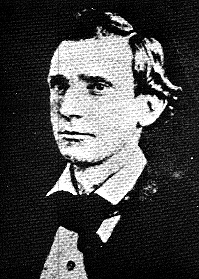
John A. Wharton
After the retreat of the Union forces and the abandonment of their Red River invasion, General Edmund Kirby Smith, commander of all Confederate forces in the Transmississippi, ordered the bulk of the Confederate troops in Louisiana to move north into Arkansas. The Texas Cavalry Division, which since the death of Thomas Green at the Battle of Blair's Plantation (April 12, 1864) had been under the command of Major General John A. Wharton, was among the units ordered northward. Major's Cavalry Brigade, including the Arizona Scouts, went with them. For the rest of 1864 the Arizona Scouts would serve in Arkansas, fighting minor skirmishes which would claim the lives of its members, and otherwise settling into the humdrum routine of picket duty and scouting between the lines.
Most, if not all, of the Arizona men yearned to return to their homes in Arizona. But this did not reduce the determination of the Arizonans to "stick it out to the end" if that was the only way that Arizona might yet be freed. In November of 1864, Captain James Henry Tevis (who by that time had recovered from his wounds and been restored to command of the Arizona Scouts) voiced this sentiment when he wrote to Dr. Lewis Owings. Owings, a former resident of Mesilla who had been elected to the post of "Governor of Arizona" by a Convention at Tucson in April 1860, was now acting as Confederate Arizonaís unofficial "Governor-in-exile" in San Antonio. Tevis wrote: "Here I am in this miserable State of Arkansas and praying every day that I may be ordered somewhere else...We are all ready to fight four years longer even if the government never gives us any clothing or pays us a dollar. I think we will be the last men to give up."51 As it turned out, Tevis was not far wrong.
As the year 1865 dawned, prospects for the Confederacy looked bleak, and only got worse as time wore on. Many Confederate soldiers in all theatres could see the handwriting on the wall, and desertion rose to unprecedented levels (of 358,692 men on the official rolls of the Confederate Army at the close of the war, a staggering 198,494 were absent from the ranks, leaving slightly over 160,000 actually in the field when the end came...55 percent of the entire army had deserted their posts and gone home).52 In the Transmississippi, mutinies occurred in many Texas units, including Wharton's Texas Cavalry Division. However, Captain Tevis and the Arizona Scouts did not take part in these mutinies, and were singled out for special praise by General Wharton for "remaining true to their colours" in a dispatch dated February 24, 1865.53
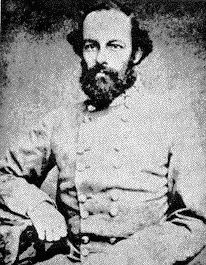
Edmund Kirby Smith
The collapse came in April 1865, with the surrender of General Robert E. Lee's Army of Northern Virginia, then of General Joseph E. Johnston's Army of Tennessee, signalling the end of effective Confederate resistance east of the Mississippi. Other eastern Confederate armies, such as that of General Sam Jones in Florida and of General Richard Taylor in Alabama, soon followed suit. By the time May was in full bloom, Kirby Smith's Army of the Transmississippi was the only significant Confederate fighting force still in existance.
Many in the Transmississippi armies wanted to continue the struggle, including Captain James Henry Tevis, who six weeks after Lee's surrender was still exhorting his fellow Confederates to fight on to "victory or death, which will be preferable to subjugation."54 But the majority of Confederate soldiers could see that the end had come and simply wanted to go home, and the Army of the Transmississippi melted away like mist before the morning sun. General Edmund Kirby Smith, conceding at last the reality of Confederate defeat, surrendered all Confederate forces west of the Mississippi River on May 26, 1865, and shortly thereafter the Arizonans themselves had to admit the futility of continuing the struggle and gathered for their final muster at Hempstead, Texas.55
Of the 15 men who gathered that day, Captain Tevis would later recall, only three ever returned to Arizona.56 Tevis himself was among these...he settled near Bowie, Arizona in the 1880s and engaged in mining, ranching, and railroad development after the war, and was eventually elected, in 1891, to the Arizona Territorial Legislature.57 The rest of the survivors of what had once been Company A, Baylor's Regiment of Arizona Rangers could not bring themselves to live in an Arizona under Yankee rule. Even in defeat, these men remained independent, defiant, and proud, qualities that in many ways define what it means to to be an Arizonan even today. They were the Frontiersmen of the Confederacy, and their achievements form a heritage of which Arizona may by justly proud.
NOTES
1
Martin Hardwick Hall, THE CONFEDERATE ARMY OF NEW MEXICO, Austin, Texas: Presidial Press, 1978, pp 353-355 and 367-369. Hereafter cited as Hall.2
While Baylorís original order creating the proposed Ranger Regiment is lost to history, in late 1862 he wrote to General Paul O. Hebert, advising him that Hunterís company had been organized "for a Regiment of Rangers," and requesting their services "for immediate use," as he was at the time raising a new Arizona Brigade and intended the Ranger Regiment to be part of it. However, by that time the company had been assigned to Lt. Colonel Philemon T. Herbertís Battalion of Arizona Cavalry, and assigned to the Sibley Brigade, and so the Ranger Regiment would never become a reality. See L. Boyd Finch, CONFEDERATE PATHWAY TO THE PACIFIC: MAJOR SHEROD HUNTER AND ARIZONA TERRITORY, C.S.A., Tucson, Arizona: Arizona Historical Society, 1996, p. 171, hereafter cited as Finch, PATHWAY.3
Hall, p. 361.4
Hall, p. 361.5
L. Boyd Finch, "The Civil War in Arizona: The Confederates Occupy Tucson," ARIZONA HIGHWAYS, January 1989, p. 16, hereafter cited as Finch, "Tucson."6
Hall, p. 361.7
Charles Leland Sonnichsen, TUCSON: THE LIFE AND TIMES OF AN AMERICAN CITY, Norman, Oklahoma: University of Oklahoma Press, 1982, p. 62, hereafter cited as Sonnichsen.8
Finch, "Tucson," p. 16.9
Finch, PATHWAY, p. 17110
An example of this is found in Calvin P. Horn and William S. Wallace, ed., CONFEDERATE VICTORIES IN THE SOUTHWEST--PRELUDE TO DEFEAT.Albuquerque, NM: Horn and Wallace, 1961, pp 200-201, hereafter cited as Horn and Wallace. This book is a collection of reprints of every document relating to the campaigns in New Mexico and Arizona which originally appeared in the United States War Departmentís massive 130-volume. OFFICIAL RECORDS OF THE UNION AND CONFEDERATE ARMIES IN THE WAR OF THE REBELLION. Other examples can be found in Sherod Hunterís "Jacket" at the National Archives.
11
L. Boyd Finch, "Sherod Hunter and the Confederates in Arizona," JOURNAL OF ARIZONA HISTORY, Spring 1969, p. 160, hereafter cited as Finch, "Hunter.".12
Hall, p. 362.13
Odie Faulk, ARIZONA: A SHORT HISTORY. Norman, OK: University of Oklahoma Press, 1970, p. 105. Hereafter cited as Faulk.14
Affidavit of Hiram Stephens, 5 October 1862, reprinted in Hayden Arizona Pioneer Biographies Collection at Arizona State University. Accessible by internet at the following URL...http://info.lib.asu.edu/archives/azbio/hunters.pdf.15
Robert Lee Kerby, THE CONFEDERATE INVASION OF NEW MEXICO AND ARIZONA. Tucson, Arizona: Westerlore Press, 1958, p. 78. Hereafter cited as Kerby.16
Hall, p. 362.17
John Robert Baylor, orders to Captain Sherod Hunter, February 10, 1862, found in the Sherod Hunter "Jacket" at the National Archives, COLLECTIONS OF PRIVATE MILITARY PAPERS OF OFFICERS OF THE CONFEDERATE STATES ARMY.18
These aims, and others, were detailed in orders issued by Governor Baylor on February 9, 1862, reprinted in Finch, "Hunter," pp 202-203.19
Sherod Hunter, in a report to John R. Baylor dated April 5, 1862, states that the command arrived in Tucson on February 28. The report is reprinted in Calvin P. Horn and William S. Wallace, CONFEDERATE VICTORIES IN THE SOUTHWEST, Albuquerque, New Mexico: Horn and Wallace, 1961, pp 200-201. However, on the day prior he had prepared a loyalty oath for one J. W. Jones, which was signed at Tucson on that date. So Company A had to have been in Tucson on February 27. See Finch, "Hunter," p. 170.20
Sherod Hunter, report to John R. Baylor, April 5, 1862, reprinted in Horn and Wallace, pp 200-201; Sherod Hunter, report to John R. Baylor, April 18, 1862, reprinted in Finch, "Hunter," pp 203-204; Captain William Calloway, 1st California Infantry, report to Major Edwin A. Rigg, April 18, 1862, reprinted in Finch, "Hunter," pp 205-206; John Ross Browne, ADVENTURES IN THE APACHE COUNTRY: A TOUR THROUGH ARIZONA--1864, New York: Harper and Brother, 1869, p 111.21
Sherod Hunter, report to John R. Baylor, April 5, 1862, reprinted in Horn and Wallace, pp 200-201; Sherod Hunter, report to John R. Baylor, April 18, 1862, reprinted in Finch, "Hunter," pp 203-204; Captain William Calloway, 1st California Infantry, report to Major Edwin A. Rigg, April 18, 1862, reprinted in Finch, "Hunter," pp 205-206.22
Finch, PATHWAY, pp 152-153.23
Sherod Hunter, report to John R. Baylor, April 18, 1862, reprinted in Finch, "Hunter," pp 203-204.24
Finch, PATHWAY, p. 153.25
A complete itinerary and history of the campaign from the perspective of the Union California Column can be found in Surgeon James M. McNulty, Acting Medical Inspector of the California Column, report to General W. A. Hammond, Surgeon General of the U.S. Army, October 1863, reprinted in Calvin P. Horn and William S. Wallace, UNION ARMY OPERATIONS IN THE SOUTHWEST, Albuquerque, New Mexico: Horn and Wallace, 1961, pp. 81-90, hereafter cited as Horn and Wallace, UNION.26
Finch, PATHWAY, p. 153.27
Hall, p. 363.28
Finch, PATHWAY, p. 164.29
Hall, p. 363; Finch, PATHWAY, pp 164-167; Colonel William Steele, report to General Samuel Cooper, Adjutant and Inspector General, C.S. Army, July 12, 1862, reprinted in Horn and Wallace, UNION, pp. 129-130; Brigadier General James H. Carleton, U.S. Army, report to Major Richard C. Drum, Assistant Adjutant General, July 22, 1862, reprinted in Horn and Wallace, UNION, pp 40-41.30
Finch, PATHWAY, p. 167.31
Hall, p. 363.32
Finch, PATHWAY, p. 171.33
Jerry Thompson, "General Henry Hopkins Sibley," HANDBOOK OF TEXAS ONLINE, http://www.tsha.utexas.edu/handbook/online/articles/view/SS/fsi1.html.34
Surgeon James M. McNulty, report to General W. A. Hammond, October 1863, reprinted in Horn and Wallace, pp. 81-90.35
An excellent discussion of the production and issue of undyed uniforms from the Huntsville Penitentiary and other sources in the Transmississippi West is found in Fred Adolphus, "DRAB: The other Confederate Color," CONFEDERATE VETERAN, September/October 1992, pp 36-41.36
National Archives, Compiled Miltary Service Records of Major Sherod Hunter, Second Texas-Arizona Cavalry Regiment, and Captain Robert Swope, Herbertís Battalion, Arizona Cavalry.37
Alvin M. Josephy, Jr., THE CIVIL WAR IN THE AMERICAN WEST, New York: Alfred A Knopf, 1991, pp 166-167, hereafter cited as Josephy.38
Brigadier General Henry Hopkins Sibley, report to Lt. General T. H. Holmes, 25 December 1862, found in United States War Department, THE WAR OF THE REBELLION: OFFICIAL RECORDS OF THE UNION AND CONFEDERATE ARMIES, Series I, Volume 15, pp 910-911. Hereafter cited as WAR OF THE REBELLION.39
Josephy, pp 169-170, 174; Finch, PATHWAY, pp. 180-181.40
Compiled Military Service Records, Captain Robert L. Swope, Herbertís Battalion, Arizona Cavalry and lst Lieutenant James Henry Tevis, Herbertís Battalion, Arizona Cavalry; Finch, PATHWAY, p. 181. A voucher for clothing for the company which was found in Lieutenant Tevisís Compiled Service Record shows that as late as June 1, 1863 (after Herbertís Battalion was broken up), Tevis was still signing documents as "1st Lieutenant, Commanding Company."41
Josephy, pp. 170-172.42
Letter from Captain James Henry Tevis to the TUCSON DAILY CITIZEN, January 6, 1899; see also Finch, PATHWAY, p. 181.43
Finch, PATHWAY, p. 182, 209; see also L. Boyd Finch, "Arizona in Exile: Confederate Schemes to Recapture the Southwest," JOURNAL OF ARIZONA HISTORY, Spring 1992, pp 67-68, hereafter cited as Finch, "Arizona."44
Stewart Sifakis, COMPENDIUM OF THE CONFEDERATE ARMIES--TEXAS, New York: Facts on File, 1995, pp 44, 48, hereafter cited as Sifakis45
A brief history of Saufleyís Texas Scouting Battalion, attached to Captain Tevisís Compiled Military Service Record from the time period when the Arizona Scouts were assigned as Company E of the battalion, states that the battalionís men had been "detailed from Baylorís, Chisumís, Crumpís, and Madisonís Regíts, Texas Cavalry." The "Baylorís Regiment" mentioned is in fact Colonel George Wythe Baylorís Second Texas-Arizona Cavalry Regiment. Since Sherod Hunter was a Major in this regiment, and since he was good friends with Captain Tevis, it seems likely that he might have "pulled strings" to get his friend Captain Tevis and the other Arizona men assigned to the Second Texas-Arizona. But there is no direct proof of this.46
Josephy, pp 186-188.47
Sifakis, pp 44,48.48
Compiled Military Service Record, Captain James H. Tevis, Company E, Saufleyís Texas Scouting Cavalry Battalion. See also the history of Saufleyís Scouting Battalion which is attached to the Captain Tevisís Compiled Military Service Record..49
Colonel James Duff, report to Major W. T. Mechling, Assistant Adjutant General, First Division, Army of Texas, January 29, 1864, in WAR OF THE REBELLION, Series I, Volume 34, Part II, p 927; Colonel James Duff, report to Captain E. P. Turner, Assistant Adjutant General, February 27, 1864, in WAR OF THE REBELLION, Series I, Volume 34, Part II, p. 1001.50
Their presence during this campaign is confirmed by Colonel George Wythe Baylor, report to Captain Ogden, Assistant Adjutant General, in WAR OF THE REBELLION, Series I, Volume 34, Part I, pp 616-625. The company is mentioned by name twice in this report, with the capture of the Emma being recounted in on p. 621. The wounding of Captain Tevis is not mentioned in the report, but First Lieutenant Smith is listed as being in command as of May 1, when the Emma was captured. Rich Saathoff, in his excellent article on Company A, states that Tevis was wounded at Mansfield, but the present author has been unable to find independent documentation of that. Saathoffís article can be viewed on the internet at: http://www.geocities.com/hardeeflag/arizonarangers/51
Finch, "Arizona," p. 67.52
Major Hardy Z. Bogue, "Confederate Manpower Mobilization," CONFEDERATE VETERAN, July/August 1989, p. 10.53
The report is cited in Finch, "Arizona," p. 84.54
Finch, "Arizona," p. 8155
Letter from Captain James Henry Tevis to the TUCSON DAILY CITIZEN, January 6, 1899.56
Finch, "Arizona," p. 81.57
Biography of James Henry Tevis, Hayden Arizona Pioneer Biographies Collection at Arizona State University. Accessible by internet at the following URL...http://info.lib.asu.edu/archives/azbio/tevisj.pdf.
![]()
Some clipart on this page was used courtesy of
and
The picture of General Richard Taylor is courtesy of the Richard Taylor Camp 1308, Sons of Confederate Veterans, Shreveport, Louisiana.
The music file of "The Girl I Left Behind Me" (or as your Rebmaster likes to think of it, "Old Abe Lies Sick") was composed and is copyrighted by Barry Taylor. Great, ain't it? For more great music files like this one, visit THE CONTEMPLATOR'S FOLK MUSIC SITE.
![]()
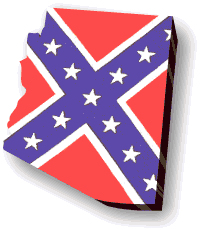 BACK
TO THE ARIZONA CONFEDERATES PAGE
BACK
TO THE ARIZONA CONFEDERATES PAGE
Copyright 1999-2007 by the Colonel Sherod Hunter Camp 1525, Sons of Confederate Veterans, Phoenix, Arizona. All rights reserved. Last updated on 23 July 2007.


 CHARGE
AHEAD TO THE NEXT PAGE
CHARGE
AHEAD TO THE NEXT PAGE